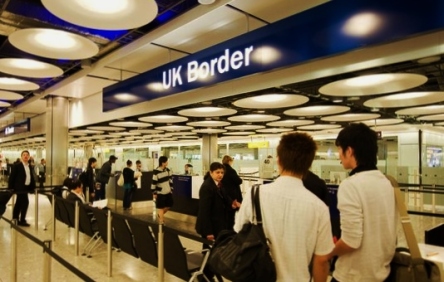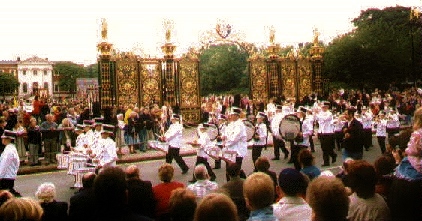For years the waters of the River Mersey have supplied a great wealth of attraction and a rich maritime past. Now with the surge in tourists boarding cruise ships for their holiday there has been a boost in the Merseyside tourism sector. With a substantial increase in the number of ships visiting the city, docking close to the famous Liver Building, the future is certainly all about cruising.
2014 will see at least fifty visits by cruise ships to Liverpool, without counting visits from the Royal Navy vessels. Officially opened in 2007, the Liverpool Cruise Terminal cost £19 million to build. It previously and still does allow cruise ships to call at the city, offering passengers the security and safety of visiting a world class destination. The new build also improved services for customers of the Isle of Man Steam Packet Ferry. In 2012, after a bizarre decision to make Liverpool City Council repay previous funding, a decision was reached that would see cruise ships able to begin and end their journeys in the city, for the first time in over 40 years. Liverpool is now a world class cruising destination.
The first commercial transatlantic trade can be traced as far back as 1648 and today Liverpool’s shipping industry remains one of commercial ventures albeit pushed heavily through the tourism sector. This year is expected to see an estimated 70,000 visitors to Liverpool on cruise ships alone. That’s without any guesses toward the number of people from across the North West who will head to the city to catch a glimpse of the liners, including the German six-star rated MS Europa 2 and Princess Cruises’ Ruby Princess. Thousands of pounds will be spent by tourists in the city, in restaurants, museums and shops, with Mayor Joe Anderson saying that each vessel will be worth up to £1 million to the local economy. This will continue to create and sustain jobs in the Merseyside tourism sector. The sector which is vital for Liverpool’s economic future.
Cruise passengers from Northern Britain have spent years travelling to the ‘cruise hub’ in Southampton and now Liverpool could offer an unparalleled northern hub for cruise liners. There has been some upset from the southern cruise city however. Experts, based in Southampton, have said that despite Liverpool’s rise in the cruise liner industry Southampton will not be affected. The so called ‘cruise wars’ between the two ports has been raging for many years. Last year, an announcement from Merseyside confirmed a dredging process would start to take place, at the tune of £35million of government funding, to allow larger container and passenger ships near the Seaforth estuary. At the same time, Southampton confirmed a privately funded project in to the regeneration of their docks, this time to the sound of £70 million. Southampton’s council has stated that its history will ensure the future of the docks remains alive. But Liverpool’s richer maritime history could see the city head to the top of the UK’s top cruise destination.
Ships still dominate the River Mersey and it is an industry which is vital to the growth and success of Merseyside’s economy. From the ferry that sails passengers between the Pier Head and Wirral to the large container ships that dock at the Port of Liverpool, the river is more than the bloodline for Liverpool. Cammell Laird, dominating the Wirral side of the Mersey continues to thrive as the largest and most successful ship repair and conversion specialist in the UK. Today, ship building at the Birkenhead site continues to mould the UK economy as well as keeping local people employed and the ship building industry alive.
Elsewhere, Liverpool is often regarded as the spiritual home of Cunard; the 175th anniversary of the historic cruise line will be celebrated in 2015 in front of the three graces at the Pier Head. The historic ‘unsinkable’ Titanic was registered in Liverpool and so the city name was carried on her stern; The Lusitania which entered service in Liverpool had a similar strong link to the city people. Both are two of the worst shipping disasters in maritime history. Whilst both of these ships history is marked in the city and the North West maritime past, it is hoped the disasters are not an indication for the future of shipping in the area.
Speak to any overseas tourists and one of the top destinations that is spoken is Liverpool. For it’s culture and history, the city has gained international recognition. See how many tourists openly praise the city on their arrival and it is very easy to see that visitors ‘love Liverpool’. Currently it is smaller ships that are beginning their cruise journeys in Liverpool, but it is hoped that the continuing support from the city council and visits from Cunard’s Queen Elizabeth, Mary and Victoria in 2015, will not only pinpoint Liverpool as the ultimate cruising city but also create maritime history.
The docks of Liverpool have paved the way for economic security in Liverpool for generations. From when the trade of commodities such as sugar were stored in the Albert Dock warehouses right through the hosting of the ‘Tall Ships’ and the round the world ‘Clipper Race’, the waters have always been held in great respect by the people of Merseyside. Today, although Liverpool may not be the international trading port it once was, the future is now destined for tourism. Vehicle ferries across the Irish Sea have terminated in Liverpool for years, cruises which have been visiting seem to be getting bigger and bigger, and the next step is ensuring larger liners not only visit the city but ‘turnaround’ from there too.
There is no destination like Liverpool. History and 21st century culture are a mix within a stones throw from the new cruise terminal. The diversity of the great city, its people, architecture and culture alike, are a huge draw for tourists and it certainly makes sense for it to be the ultimate cruise stop on the global map. The city’s rich maritime history which is still celebrated and commemorated to this day means the only way forward for Liverpool is cruising on the Mersey.
For more details on the Cruise Terminal and visits by ships to Merseyside visit the official website: http://www.cruise-liverpool.com/





